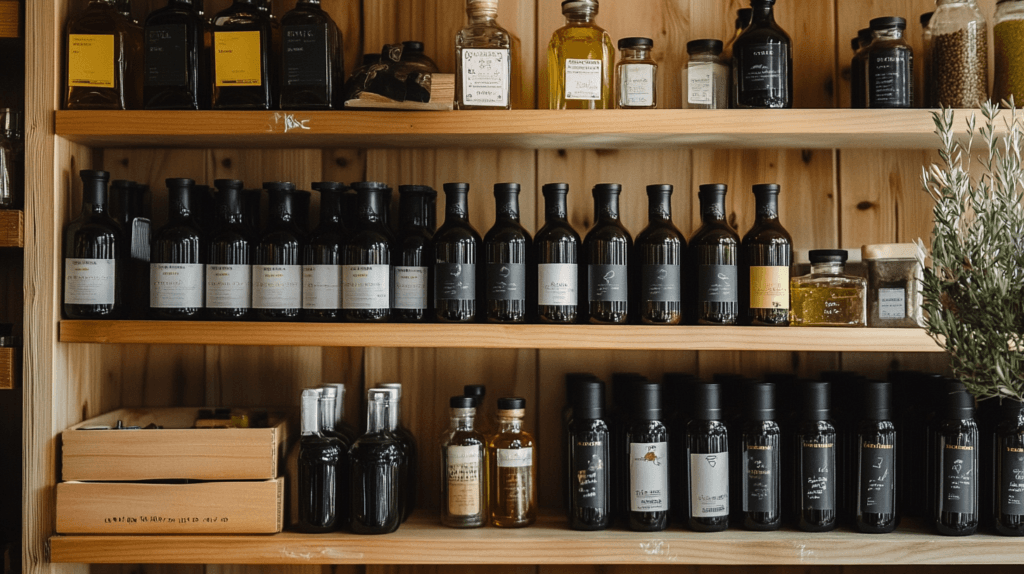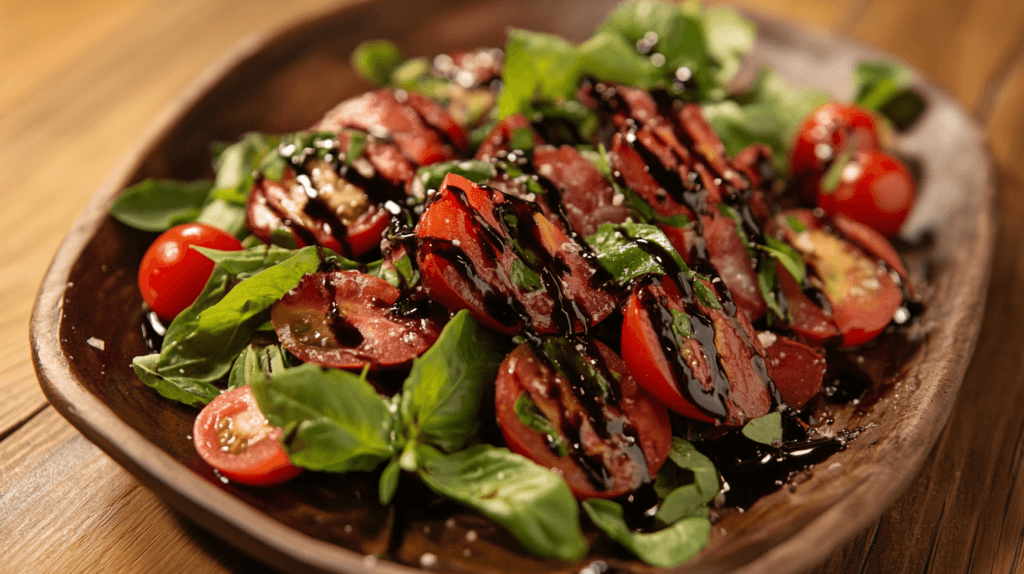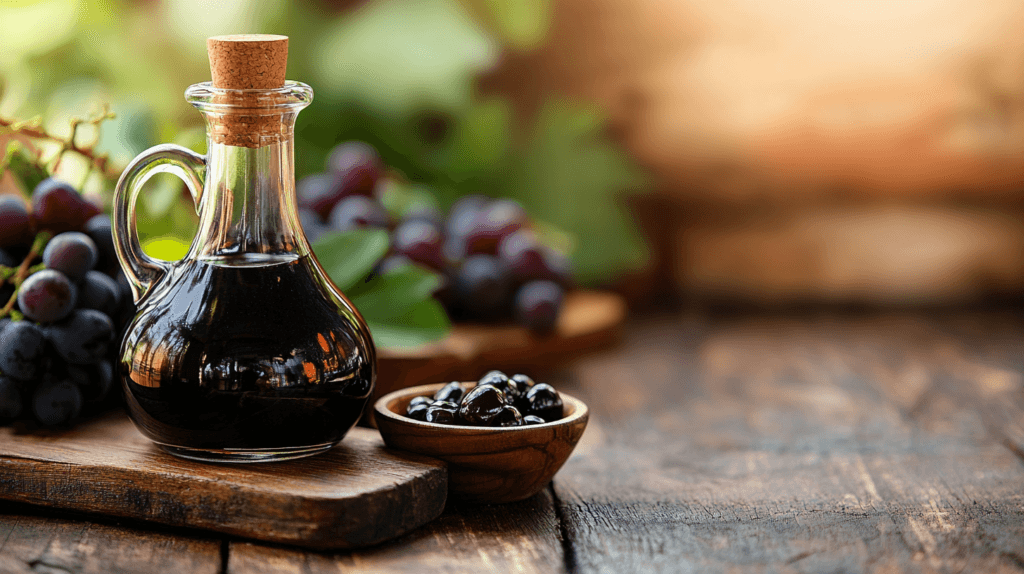Balsamic vinegar is a cherished culinary ingredient that adds a touch of sophistication to countless dishes. Its unique flavor—rich, tangy, and slightly sweet—makes it a favorite in kitchens worldwide. But when it comes to storing this liquid gold, questions often arise, especially about whether you should refrigerate balsamic vinegar. The answer depends on various factors, including the type of balsamic vinegar and how you plan to use it. Let’s dive into the details.
What is Balsamic Vinegar?
Balsamic vinegar is a dark, concentrated, and flavorful vinegar traditionally produced in the Modena and Reggio Emilia regions of Italy. Made from grape must (freshly crushed grape juice with skins, seeds, and stems), it undergoes a meticulous fermentation and aging process, which gives it its distinctive taste and thick consistency.
The Origins and Production of Balsamic Vinegar
Balsamic vinegar has a rich history that begins in ancient Italy, where people regarded it as a luxury good for royalty and special occasions. Artisans craft traditional balsamic vinegar using time-honored methods, aging it in wooden barrels for 12 to 25 years or more. The longer the aging, the richer and more complex the flavor. Commercially produced balsamic vinegars, while less expensive, mimic the taste of traditional versions but often include additives and shorter aging periods.
Types of Balsamic Vinegar: Traditional vs. Commercial
When discussing storage and refrigeration, it’s essential to understand the two primary types of balsamic vinegar:
- Traditional Balsamic Vinegar: People best appreciate authentic, high-quality, and long-aged balsamic vinegar in small quantities, often using it as a finishing ingredient.
- Commercial Balsamic Vinegar: Mass-produced and more affordable, it often contains added caramel or thickeners and is suitable for everyday cooking and salad dressings.
Table of Contents
Storage Basics for Balsamic Vinegar

Does Balsamic Vinegar Spoil?
One of the remarkable properties of balsamic vinegar is its resistance to spoilage. Thanks to its high acidity, it naturally inhibits bacterial growth, making it a durable pantry staple. While it doesn’t spoil in the traditional sense, balsamic vinegar can lose its quality over time if not stored correctly. For instance:
Texture: Exposure to air or fluctuating temperatures may cause thickening or crystallization, which can affect its pourability.
Taste and Aroma: Improper storage can dull the vinegar’s rich aroma and complex flavors, making it less enjoyable to use.
The Ideal Conditions for Storing Balsamic Vinegar
To preserve its quality, balsamic vinegar requires specific storage conditions. Here’s what to keep in mind:
1. Cool, Dark Places
- Light and heat are the main enemies of balsamic vinegar. Exposure to sunlight or high temperatures can affect its flavor and cause it to age unevenly..
- Store your bottle in a pantry, cupboard, or another area that stays consistently cool and dark. The ideal temperature range is between 50–70°F (10–21°C).
2. Airtight Containers
- Exposure to air can lead to the oxidation of balsamic vinegar, which may alter its flavor and acidity over time.
- Always ensure the bottle is securely sealed after each use. If the original cap is loose or damaged, transfer the vinegar to an airtight container to maintain its freshness.
3. Avoid Refrigeration for Most Varieties
- Traditional balsamic vinegar does not need refrigeration because of its natural acidity and aging process.
- Commercial varieties can be refrigerated if preferred, especially when used in salad dressings or if they contain additional flavorings. However, be aware that cold storage may cause the vinegar to become thicker.
4. Keep It Upright
- Storing balsamic vinegar upright helps prevent leaks and reduces the surface area exposed to air.
- Make sure the bottle is stored securely to prevent accidental spills or tipping.
How Temperature Affects Balsamic Vinegar
High Temperatures
- Heat is particularly damaging to balsamic vinegar. Storing it near a stove, oven, or window can accelerate evaporation and alter its delicate balance of flavors.
- Over time, prolonged exposure to heat may result in an overly sharp taste or a loss of sweetness.
Cold Temperatures
- Refrigeration is usually not needed for balsamic vinegar and may cause traditional varieties to thicken
- If you refrigerate it and it thickens, allow it to return to room temperature before use to restore its usual consistency.
Pro Tips for Long-Term Storage
- Check the Seal Regularly: Ensure you seal the bottle tightly, as loose caps allow air to enter, which can degrade its quality.
- Avoid Cross-Contamination: Always pour balsamic vinegar into a separate dish before using it for cooking or dipping to prevent food particles from getting into the bottle.
- Use Within a Reasonable Time: While balsamic vinegar has an extended shelf life, consuming it within 3–5 years of opening ensures optimal flavor.
How Balsamic Vinegar Changes Over Time
Natural Aging Process: Traditional balsamic vinegar is known for its ability to age gracefully. When stored in tightly sealed containers, it undergoes a slow evaporation process, even inside the bottle. This natural concentration enhances its sweetness and thickens its consistency over the years. Refrigerating balsamic vinegar may affect the aging process, especially in authentic traditional varieties that develop a syrupy texture over time.
Flavor Evolution: Over time, the flavor of balsamic vinegar may change. In high-quality varieties, the tangy acidity mellows out, allowing the sweetness and wood-infused undertones from the aging barrels to shine. In contrast, commercially produced balsamic vinegar may undergo a less noticeable change due to the added preservatives.
Changes in Commercial Vinegars: Commercially produced balsamic vinegars typically do not develop the same depth of flavor as traditional ones because they lack the prolonged aging process. Over time, these products may lose their ideal balance of sweetness and tanginess, becoming either too sharp or too bland.
Visual Signs of Aging: As balsamic vinegar ages, it may develop a darker color and thicker consistency. Sediment at the bottom of the bottle is normal and not an indication of spoilage. This is especially true in traditional balsamic, where sediments form due to evaporation and concentration.
Proper Storage is Essential: To preserve the quality of balsamic vinegar over time, it’s crucial to store it correctly. Exposure to heat, light, and air can accelerate unwanted changes, such as a loss of aroma or uneven thickening. Storing it in a cool, dark place helps ensure it ages well.
Refrigeration: To Chill or Not to Chill?
Arguments for Refrigerating Balsamic Vinegar
Some chefs and home cooks choose to refrigerate balsamic vinegar for specific reasons, such as:
- Preserving Flavored Varieties: Infused balsamic vinegars (e.g., raspberry or garlic) may benefit from refrigeration to maintain their added flavors.
- Hot Climates: In regions with high humidity and heat, refrigeration can help prevent spoilage.
Reasons to Avoid Refrigeration
Traditionalists argue against refrigerating balsamic vinegar for these reasons:
- Changes in Consistency: Cold temperatures can cause it to thicken, making it harder to pour or use.
- Flavor Alteration: The flavor profile may be muted or altered when chilled.
- No Real Need: The natural acidity of balsamic vinegar acts as a preservative, rendering refrigeration unnecessary in most cases.
What Experts Recommend About Refrigerating Balsamic Vinegar
Experts generally agree that traditional balsamic vinegar is best kept at room temperature to preserve its delicate flavors. For commercial balsamic vinegar used in dressings, refrigeration can be considered optional based on personal preference.
Practical Tips for Storing Balsamic Vinegar
Best Storage Practices at Room Temperature
Storing balsamic vinegar at room temperature is the most common practice. However, knowing when to refrigerate balsamic vinegar can help you maintain its quality in specific situations. Here are some essential tips for ensuring its longevity and flavor:
- Keep It Cool: While it doesn’t need refrigeration, avoid placing it near heat sources like stoves or windows.
- Use Dark Glass Bottles: If possible, store balsamic vinegar in its original container, which is often designed to block light.
- Seal It Tightly: Always replace the cap or stopper immediately after use to minimize air exposure.
Handling Flavored or Infused Balsamic Vinegars
Infused or flavored balsamic vinegars, such as those with fruit, herbs, or spices, require a bit more attention. While they can be stored at room temperature, refrigeration may help maintain the freshness of the added flavors. However, this is more about preserving the infused ingredients than the vinegar itself.
Signs Your Balsamic Vinegar Is Improperly Stored
Even though balsamic vinegar is resilient, improper storage can lead to some noticeable changes:
- Cloudiness: A cloudy appearance may develop if contaminants enter the bottle.
- Loss of Aroma: If the vinegar smells dull or uncharacteristic, it may have degraded.
- Thick Sediments: While natural sediments can form, excessive amounts could indicate poor storage.
If these issues arise, the vinegar is still likely safe to consume but might not provide the same quality of flavor.
How to Revive Balsamic Vinegar
Dealing with Crystallization: Over time, balsamic vinegar can form crystals, especially if exposed to varying temperatures. These harmless crystals are a natural byproduct of aging. If you refrigerate balsamic vinegar and notice crystals, you can dissolve them by gently warming the bottle in a bowl of warm (not hot) water for 5-10 minutes. This process restores the vinegar’s smooth consistency without affecting its flavor.
Fixing Overly Thick Vinegar: Sometimes, balsamic vinegar may become too thick to pour. This can happen due to prolonged storage or evaporation. To restore its usability, mix in a small amount of fresh balsamic vinegar or a teaspoon of water, shaking the bottle gently to combine. For cooking purposes, thicker vinegar can still be diluted directly in recipes.
Restoring Flavor Balance: If the vinegar tastes too sharp or has lost some of its characteristic sweetness, it can still be salvaged for certain recipes. Pairing it with complementary ingredients, such as honey, brown sugar, or olive oil, can restore its flavor balance. Using it as a marinade or in cooked dishes can mask minor flavor imperfections.
When to Let It Go: Despite balsamic vinegar’s long shelf life, there are times when it may no longer be usable. If you notice a persistent sour or musty smell, a sharpness that overwhelms the palate, or an unusual texture, it may be time to discard it. Keep in mind that these issues are rare, particularly with properly stored balsamic vinegar.
Using Balsamic Vinegar in Different Settings

Culinary Uses: Recipes and Tips
Balsamic vinegar is incredibly versatile. Whether you’re drizzling it over a salad, glazing meats, or enhancing desserts, its bold flavor shines in various dishes. If you refrigerate balsamic vinegar, ensure it has returned to room temperature before use to fully enjoy its robust flavor. Here are some ideas:
- Salads and Dressings: Combine it with olive oil, honey, or mustard for a quick vinaigrette.
- Marinades: Use it to tenderize and flavor meats, poultry, or tofu.
- Desserts: Pair it with strawberries or vanilla ice cream for a gourmet touch.
Serving and Presentation Advice
To truly appreciate traditional balsamic vinegar, use it sparingly as a finishing touch. A few drops can elevate dishes like:
- Caprese salad with fresh mozzarella and basil.
- Grilled vegetables like zucchini or eggplant.
- Aged cheeses like Parmesan or Pecorino.
Creative Ways to Use Balsamic Vinegar
Looking for innovative ideas? Try these unique applications:
- Cocktails: Add a splash to cocktails or mocktails for a surprising depth of flavor.
- Soup Enhancer: Stir a dash into tomato or butternut squash soup for complexity.
- Bread Dip: Mix balsamic vinegar with olive oil and herbs for an irresistible dip.
Frequently Asked Questions
Does Balsamic Vinegar Require Refrigeration?
The need to refrigerate balsamic vinegar largely depends on its type and usage. Traditional balsamic vinegar, which is aged and produced under strict regulations, is best stored at room temperature to preserve its delicate flavors. In contrast, commercial balsamic vinegar, often used in salad dressings or marinades, can be refrigerated if you prefer it chilled or live in a warm climate.
For more insights into the composition of balsamic vinegar, you might find the article “Does Balsamic Vinegar Have Alcohol? Learn the Facts” helpful. It explores common questions about balsamic vinegar’s properties and uses.
Can Balsamic Vinegar Go Bad?
While balsamic vinegar doesn’t spoil in the traditional sense due to its acidity, it can lose its quality over time if not stored properly. Always check for changes in taste or texture.
How Can You Tell If Balsamic Vinegar Has Expired?
Expired balsamic vinegar might taste overly sharp, lack sweetness, or appear unusually thick or cloudy. However, these changes don’t necessarily make it unsafe to consume.
Is It Safe to Use Vinegar Stored for Years?
Yes, balsamic vinegar stored correctly can be used for years. Traditional varieties, in particular, are known to improve with age, much like fine wine.
What Are Common Misconceptions About Balsamic Vinegar Storage?
- Refrigeration Is Mandatory: As discussed, balsamic vinegar rarely needs refrigeration.
- Sediments Indicate Spoilage: Natural sedimentation is common and doesn’t harm the product.
How to Store Balsamic Vinegar for Longevity
Regardless of refrigeration, proper storage is key. Here are some tips:
- Use a cool, dark place: Store balsamic vinegar in a pantry or cabinet, away from direct sunlight and heat.
- Keep it sealed: Always close the cap tightly to prevent air exposure, which can alter its flavor and quality.
- Avoid contamination: Use clean utensils to avoid introducing impurities into the bottle.
If you’re unsure whether your balsamic vinegar is still good, you can refer to “Does Balsamic Vinegar Go Bad?” for guidance on how to spot signs of spoilage.
Conclusion
Whether or not to refrigerate balsamic vinegar depends largely on the type you own and how you use it. Traditional balsamic vinegar, with its delicate flavors, is best stored at room temperature in a cool, dark place. Commercial balsamic vinegars, on the other hand, can tolerate refrigeration, especially if used for dressings or in hot climates.
Wondering how to use balsamic vinegar creatively? Check out this “Balsamic Chicken Recipe” for a delicious way to incorporate it into your meals. The sweetness and acidity of balsamic vinegar pair beautifully with savory dishes like chicken.

